NEWS
What does 3.7 billion-year-old bacteria look like?
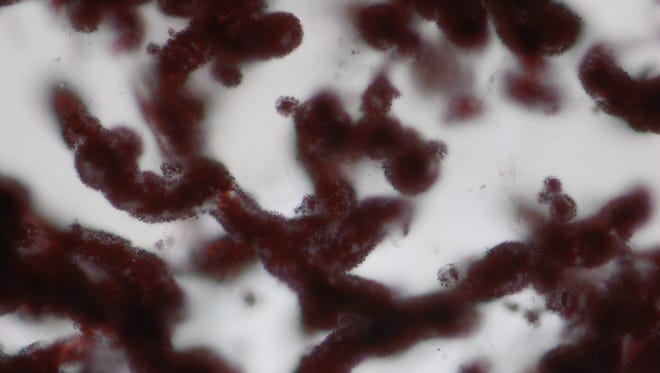
Scientists have found traces of bacteria living more than 3.7 billion years ago, an age that would make them – if confirmed -- the oldest known fossils and would bolster the idea that life got off to a running start on the young Earth. This is Well-preserved haematite tubular microfossils from the 480 million-year-old Løkken hydrothermal vent deposits that represent good analogues for some of the earliest lifeforms on Earth.
M. Dodd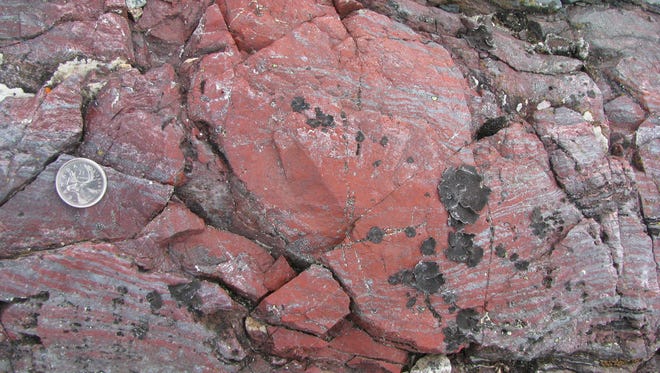
According to the researchers who discovered them, the bacteria lived near hydrothermal vents, cracks in the seafloor that gush hot, mineral-laden water into the open ocean. Verification of the finding could make ocean vents elsewhere in the solar system a key target in the search for extraterrestrial life. Here, Layer-deflecting bright red concretion of haematitic chert (an iron-rich and silica-rich rock), which contains tubular and filamentous microfossils. This so-called jasper is in contact with a dark green volcanic rock in the top right and represents hydrothermal vent precipitates on the seafloor. Nuvvuagittuq Supracrustal Belt, Quebec, Canada.
Dominic Papineau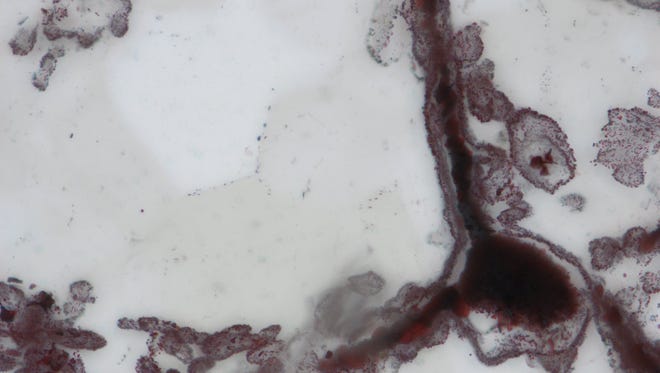
Haematite filament attached to a clump of iron in the lower right, from hydrothermal vent deposits in the Nuvvuagittuq Supracrustal Belt in Que?bec, Canada. These clumps of iron and filaments were microbial cells and are similar to modern microbes found in vent environments.
M. Dodd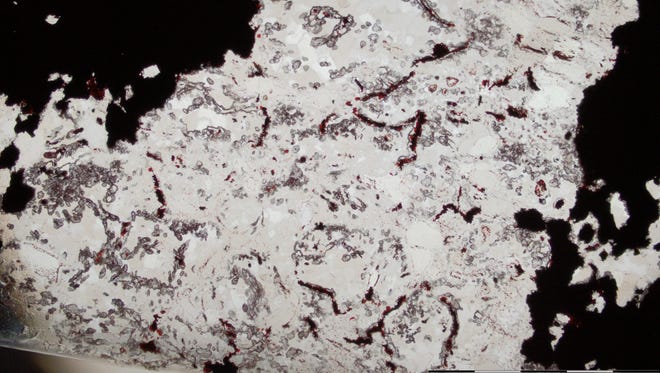
Field of microscopic filamentous microfossils inside a rounded concretion from the jasper rock in the Nuvvuagittuq Supracrustal Belt in Quebec, Canada. The filaments are composed of haematite (red lines), and are located in a quartz layer (white) surrounded by magnetite (black), where both haematite and magnetite are iron oxide minerals.
M. Dodd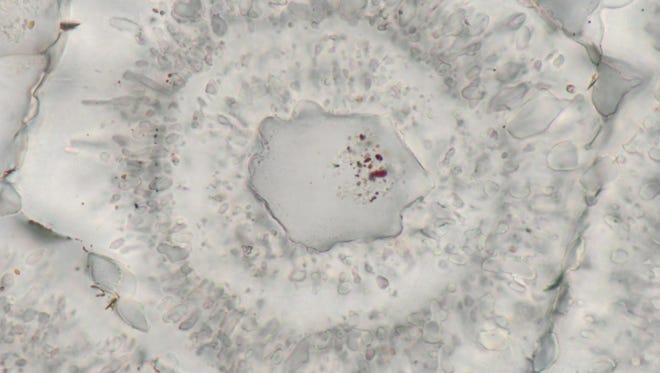
Microscopic iron-carbonate (white) rosette with concentric layers of quartz inclusions (grey) and a core of a single quartz crystal with tiny (nanoscopic) inclusions of red hematite from the Nuvvuagittuq Supracrustal Belt in Quebec, Canada. These may have formed through the oxidation of organic matter derived from microbes living around vents.
M. Dodd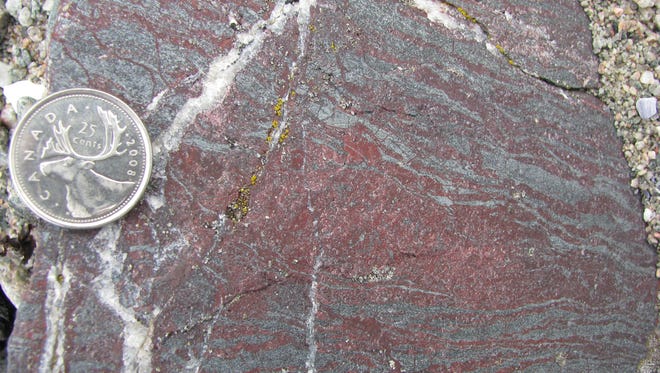
This coin give an idea of the shows of this Layer-deflecting red iron-silica rock bounded by veins of white calcite, which have sourced some of their carbon from the decayed primitive microbes. Nuvvuagittuq Supracrustal Belt, Quebec, Canada.
D. Papineau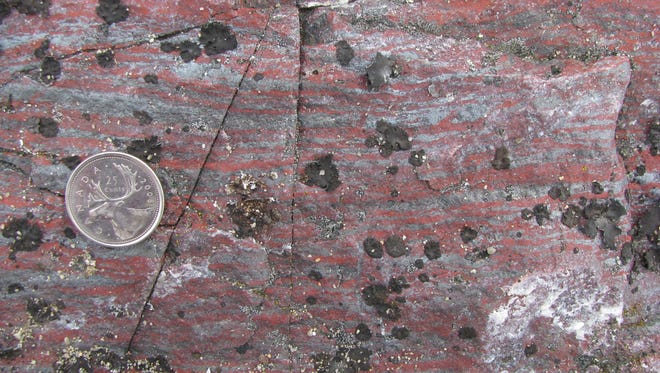
Jasper banded iron formation from the Nuvvuagittuq Supracrustal Belt in Quebec, Canada, with grey magnetite layers and red haematite-rich silica layer, both being iron- oxide minerals. Black spots are lichens.
D. Papineau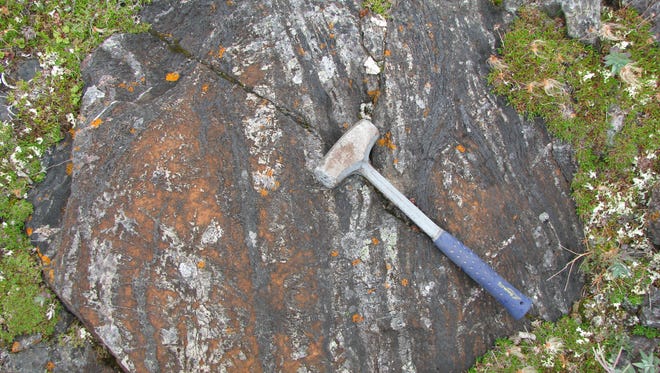
Rounded-shaped laminated iron-carbonate (orange) with white chert and black oxide and silicate layers in the Nuvvuagittuq Supracrustal Belt, Quebec, Canada. This outcrop may have been part of a hydrothermal vent structure.
D. Papineau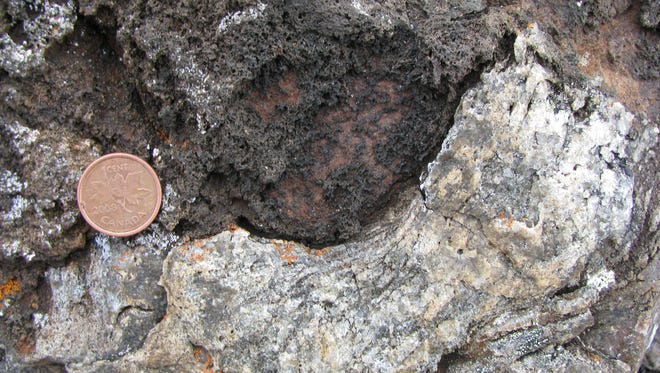
A detailed view of an outcrop with iron-carbonate (orange and black) and white-and-grey concretions, which contain carbonate-apatite rosettes; the same minerals that compose bones. When these formed, there was microbial organic matter present. From the Nuvvuagittuq Supracrustal Belt, Quebec, Canada. This Canadian penny for scale.
D. Papineau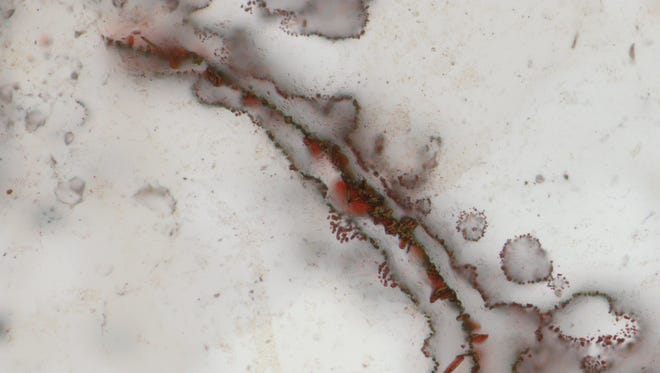
Haematite filament enveloped by a fine irregular layer of nanoscopic haematite from vent deposits in the Nuvvuagittuq Supracrustal Belt in Quebec, Canada. These filaments of iron, about half the size of a human hair, were made by primitive microbes involved in the carbon and iron cycles.
M. Dodd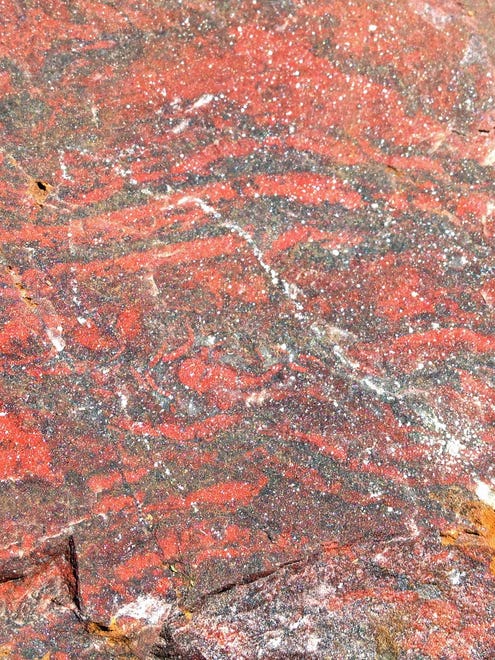
Layered haematite (red) and quartz (grey) rock from the 480 million-year-old Løkken hydrothermal vent deposit, in Norway. This rock also contains filamentous microfossils composed of haematite and therefore, it is a younger analogue for ancient habitats on early Earth and possibly elsewhere in the Solar System.
M. Dodd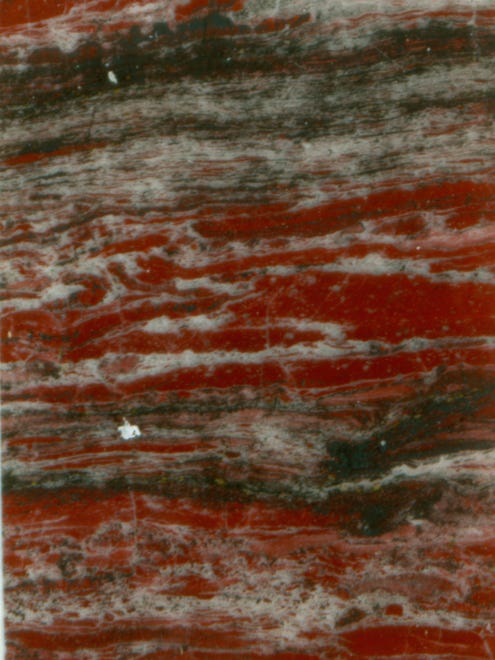
Layered haematite (red) and quartz (white) rock from the 480 million-year-old Løkken hydrothermal vent deposit, in Norway a younger analogue for ancient habitats on early Earth and possibly elsewhere in the Solar System.
M. Dodd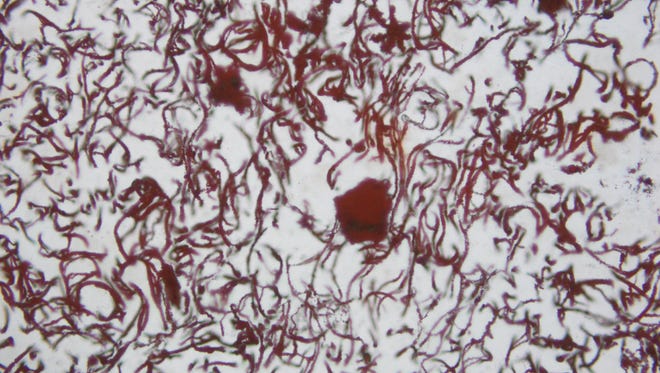
A mass of haematite filaments from the 480 million-year- old Løkken deposit, in Norway, which preserve evidence of iron-oxidizing bacteria similar to those found in the more than 3,770 million-year-old NSB deposits as well as in modern vent deposits.
M. Dodd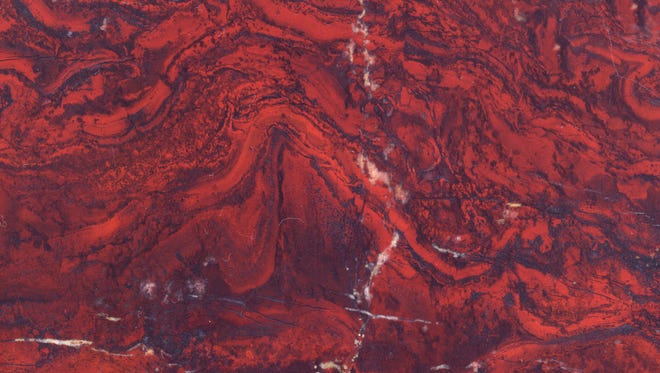
Laminated hematitic chert (jasper) from the Early Ordovician Løkken ophiolite, Norway, which was originally deposited as a Si-Fe-oxyhydroxide gel.
Tor Greene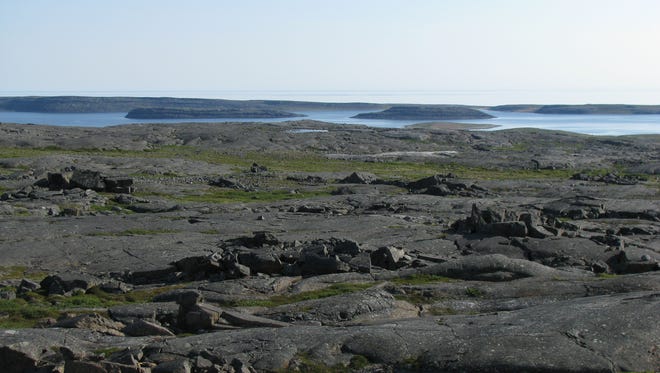
This is the Nuvvuagittuq Supracrustal Belt in Quebec, Canada that shows a few Nastapoka Islands in the distant background.
D. Papineau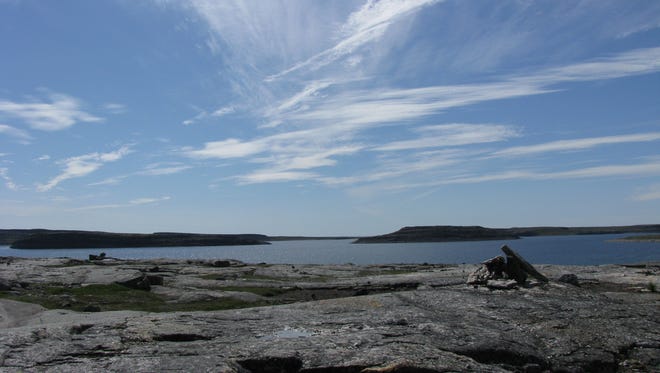
Cirrus clouds over the Hudson Bay with the Nastapoka Islands in the background.
Jonathan ONeil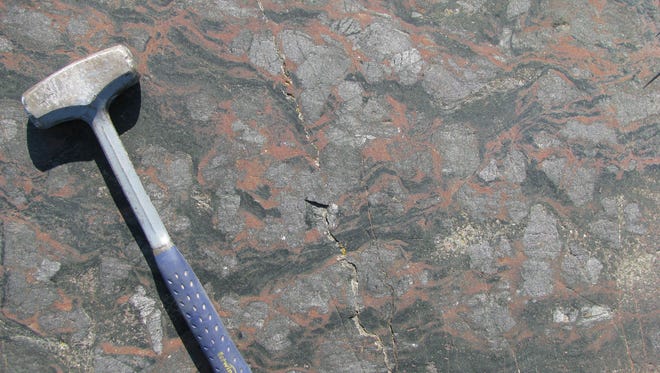
The volcanic rock with an age of at least 3,770 million- year-old and possibly up to 4,280 million-year-old, now metamorphosed with fist-sized purple rounded garnet crystals and surface rust on Fe-silicate minerals (black). Nuvvuagittuq Supracrustal Belt in Quebec, Canada.
D. Papineau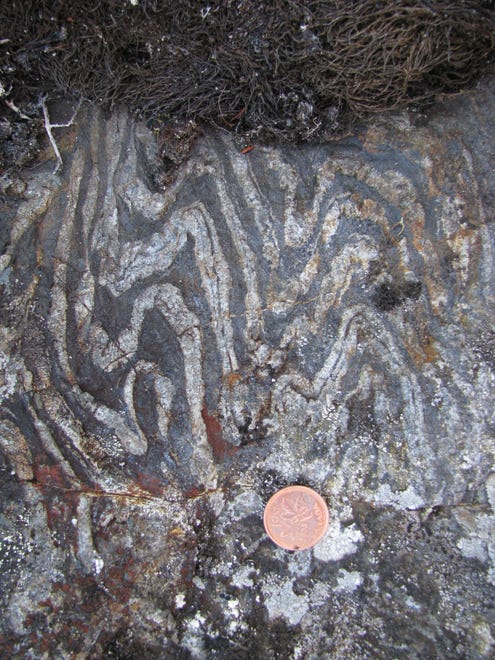
From the Nuvvuagittuq Supracrustal Belt in Quebec, Canada, this banded iron formation (the main rock resource for human use of steel) with convoluted layers of light-grey quartz and dark-grey magnetite, both a bit thinner than a Canadian penny.
D. Papineau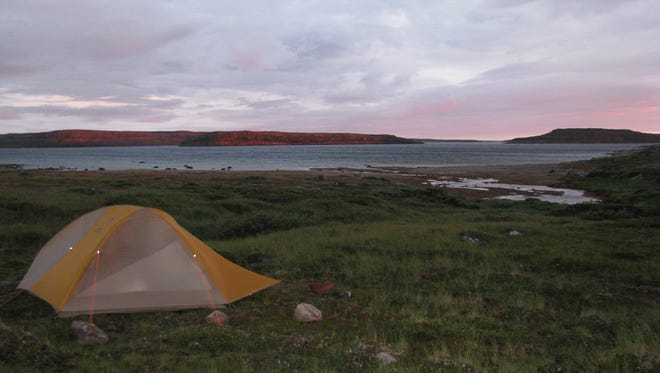
A summer sunset over the Nastapoka Islands after a day of field work in the Nuvvuagittuq Supracrustal Belt in Quebec, Canada.
D. Papineau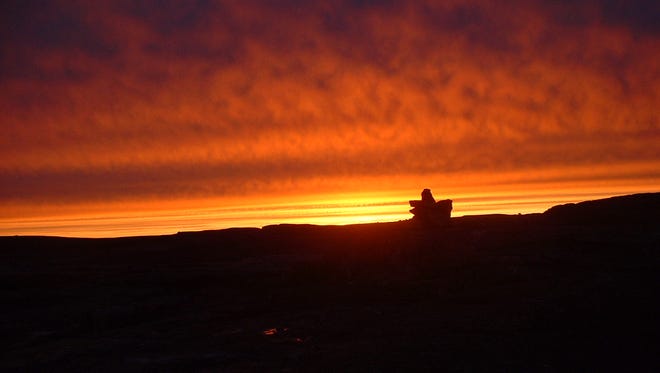
The Inuit-made inuksuk stands its position on the horizon.
J. O'Neil